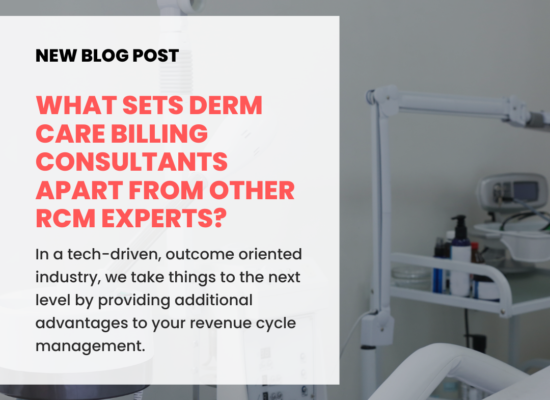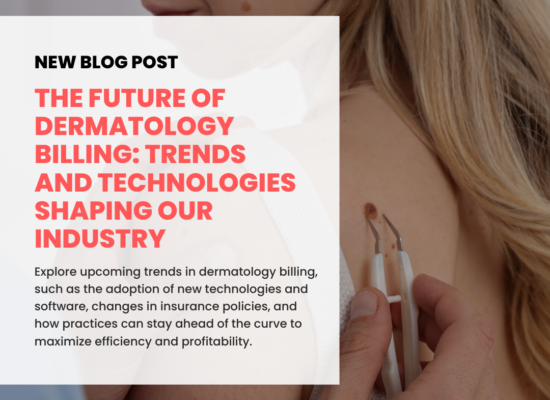What we know in the world of dermatology is that there are any number of reasons an individual may seek, and/or require, treatment. They may have suffered life-altering trauma, be experiencing a medical condition that threatens their health and well-being or seek cosmetic surgical care because they are in pain, physically or mentally. What we also know is many of those same people certainly could not have predicted, nor planned for, the kinds of cosmetic surgeries they may require in order to return them to health and as a result, may find themselves struggling to pay the treatment costs incurred for their procedures.
Inadequate insurance, or none at all, the unexpected and perhaps sudden nature of the expense, time off work due to illness or injury – these are just a few of the reasons your patients can’t pay treatment costs. The stress on both your practice and your patient does no one any favors and that’s why we’re talking about avenues for assisting patients to pay. In doing so, you may end up helping both your practice and your patient.
In no particular order, we’ll look at a few examples of how to help support your patient through the process of obtaining treatment and associated prescription costs:
1. Talk About Treatment Costs
Part of the role you can play in helping your patients navigate their way through the system starts with a simple conversation. Talk to your patient openly and honestly. Ask upfront if they can afford the drugs you are prescribing. Ask them if they have any idea of the costs associated with the procedures you are going to perform and help them to understand fully what those costs are and why. It’s ok to acknowledge you have overhead, administration and anaesthesia charges for example – and quite possibly these are things the patient did not consider. Knowledge is power and helps both you and the patient determine what options are best. Are there alternatives that as a surgeon you might still reasonably consider such as removal of a skin cancerous mole with just local freezing or excising a skin tag without freezing to help patients save costs? Encouraging frank conversation may help the patient consider asking if you have payment plans, reduced – cost options or alternatives to treatment that may still help them. On that note – offering a payment plan is an ideal way to ensure you fully recover treatment costs while allowing the patient the time they need to make the payments.
2. Discounts, Community Organizations, and Internet Fundraising Platforms
Consider discounts for patients whom you know are not in a position to pay or work with them to explore alternatives such as community or nationally based organizations that support people who need specific treatments but are unable to pay. Large, centrally based aid organizations, locally based social and community service clubs, churches or even a GoFundMe page are all potential sources of obtaining enough income to cover the treatment costs of required surgery. Good will and reputational standing in the community are for your benefit when you help others.
3. Patient Assistance Programs Through Drug Companies
Many large pharmaceutical companies offer a range of drug cost reduction and/or assistance programs for persons without coverage or without income. The paperwork can be onerous AND for many companies, just like when dealing with insurers, it will be YOU who is required to initiate the process so again, by doing your job but with a little extra care, you’ll be ensuring you get paid and you’ll be helping your patient when you do!
Generics
When it comes to prescribing drugs, an easy way you can help is by prescribing generics when and if they are appropriate. It’s helpful if you also take the time to familiarize yourself with the cost of drugs and as much as possible provide the least expensive version to the patients you serve.
Samples
Many dermatology practices WILL have samples on hand. They are there for a reason and not just to promote the drug company who made them. Rather they are an opportunity for you to use judiciously, making them available to patients whom you know will most benefit and need the most help. For some procedures, a patient may only need a few day’s worth of drugs so a sample from your offices saves an enormous amount of time (claims to the insurer) and money.
4. Covering Treatment Costs Through Insurance
One of the reasons DermCare exists is to help process claims, to understand the many and varied complicated insurance codes, and to effectively allow you to invoice for your services in a timely and cost-effective way. Insurance formularies and deductibles are a nightmare and sometimes patients are required by an insurer to try one drug before another is approved. Doctors can help smooth this process as much as possible with a clear understanding of prescription protocols, submitting proper paperwork advocating for the need for specific drugs or simply, as some dermatologists are now doing, by finding alternatives to traditional drug formulations. No matter the route you choose to try and help your patients navigate through insurance, DermCare also contributes to bottom line cost savings by making these processes more efficient.
5. Coupons and Cash Rebates
They might be few and far between but a simple search in your area will determine whether there are any suitable alternatives for treatment that might also offer the benefit of a manufacturers coupon or a drug cost related rebate.
6. Compounding Treatment Costs Options
More recently, there is another new avenue for dermatology practices to assist clients with low to moderate income and/or those without coverage and it is through the use of compounding pharmacies. Often also referred to as “Point of Care” access, medications that are compounded in-office (or locally and in affiliation with the prescribing physician) result in significantly lower treatment costs – often, even lower than whatever the patient’s insurance co-pay might have been. Some early research also indicates that adherence rates are better too as patients can access the treatments, ointments, creams or medications directly from their dermatologist, increasing the likelihood they will be used. Using compounding sources cuts down on claims denials and claims resubmissions, reducing in-office paperwork which benefits your bottom line. It’s truly a win-win for both your practice and your patient. As a final bonus, compounding allows dermatologists to prescribe customizable and tailored products that greatly reduce the risk of known irritants (or something the patient is allergic to) being contained within the prescription dosage.
In short, there are many avenues open to caring dermatology practitioners who are looking to treat the “whole” patient, not just their illness, injury, skin condition or other procedure. Taking the time to learn more about your patient right from the start fosters a holistic approach to healing, encourages more “buy in” from your patient to ensure medication and treatment adherence and all of this is based not only on their desire to get well, but a belief that you are actively trying to work WITH them toward that goal and in an affordable way. Their referrals and recommendations contribute to your bottom line and your reputational standing improves too. Sure these are “softer” determinants of a successful bottom line but a continued investment in creating a community of care that surrounds the whole patient will ultimately result in a more measurable uptick in your bottom line, proving that helping your patients really will help your practice too!






One thought on “How to Help a Patient Struggling To Pay Their Treatment Costs”
Comments are closed.